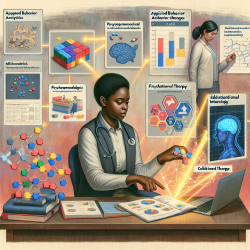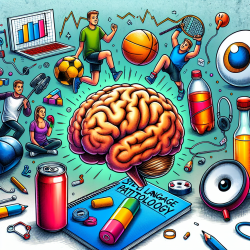Introduction
In the ever-evolving field of early childhood education, innovative approaches that combine cognitive and physical development are gaining traction. Recent research titled "Parents’ and Early Childhood Educators’ Perceptions on Movement and Learning Program Implementation" sheds light on the potential benefits of integrating movement into learning activities for preschoolers. This blog explores the findings and offers practical tips for educators and parents to enhance learning outcomes through movement-based programs.
Research Insights
The study involved an online survey of 65 parents and early childhood educators across Australia, focusing on their preferences for program delivery, duration, and mode. The survey revealed a preference for video-based programs over traditional methods, highlighting the potential benefits on children's physical activity levels, sleep, and cognitive function. However, educators preferred using book versions after piloting the program, citing logistical and connectivity issues as barriers to video-based delivery.
Implementing Movement-Based Learning
For educators and parents looking to implement movement-based learning, here are some practical tips based on the research findings:
- Incorporate Movement in Daily Activities: Integrate physical activities into routine learning tasks, such as counting games or storytelling with actions. This approach can enhance children's engagement and learning outcomes.
- Utilize Video-Based Resources: While educators may prefer books, video-based resources can be valuable for home-based programs, offering flexibility and engaging content that combines physical and cognitive tasks.
- Address Barriers: Overcome logistical challenges by ensuring resources are accessible and adaptable to different environments. Consider using larger book formats or improving video quality to enhance engagement.
- Foster Collaboration: Encourage collaboration between educators, parents, and researchers to tailor programs to specific needs and preferences, ensuring effective implementation and continuous improvement.
Benefits of Movement-Based Learning
Integrating movement into learning activities offers numerous benefits for preschoolers, including:
- Enhanced Cognitive Function: Movement-based activities can improve executive functions such as working memory, cognitive flexibility, and self-regulation.
- Improved Physical Health: Regular physical activity promotes better physical health, contributing to overall well-being and development.
- Increased Engagement and Enjoyment: Combining movement with learning tasks makes activities more engaging and enjoyable for children, fostering a positive attitude towards learning.
Conclusion
Movement-based learning programs hold great potential for enhancing cognitive and physical development in preschoolers. By addressing barriers and fostering collaboration, educators and parents can create effective programs that integrate movement into daily learning activities. As we continue to explore innovative approaches in early childhood education, movement-based learning offers a promising pathway to nurturing well-rounded, healthy, and engaged learners.
To read the original research paper, please follow this link: Parents’ and Early Childhood Educators’ Perceptions on Movement and Learning Program Implementation.










